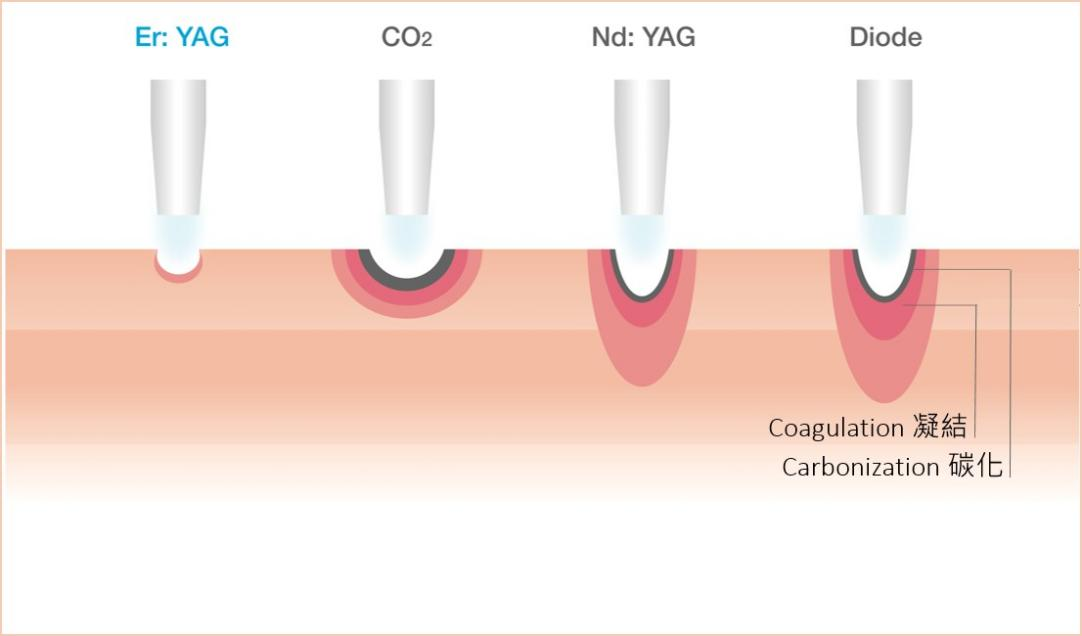
2022-08-18 2419
When it comes to the application of laser in dentistry, most dentists first think that laser can be used as a laser knife for cutting in maxillofacial surgery. However, in fact, lasers have been widely used in dentistry of various aspects. Laser, simply understood, is a kind of strong light emitted by a certain substance (medium) when it is stimulated by the outside world. The term “laser” stands for Light Amplification by Stimulated Emission of Radiation. According to the classification of laser media, lasers can be divided into carbon dioxide lasers, helium-neon lasers, Nd:YAG lasers, erbium lasers and diode lasers. Among them, the diode laser is the most widely used laser with the best biological effect. According to the classification of energy, lasers can be divided into low power lasers, medium power lasers and high power lasers. When lasers with different powers act on tissues, the effects are completely different.
Low power laser: refers to a laser with a power less than 1W. Its biological effects are mainly therapy. It is mainly used to treat various inflammations in the oral cavity, such as apical inflammation, early pulpitis, pulp congestion, root canal treatment reaction, soft tissue infection, pericoronitis, ulcer, etc. It is also good for wound healing after surgery. When Low power laser acting on mitochondria of cells, it can enhance its activity, release more energy, and promote cell activity. When acting on the nucleus, it can promote division and reproduction, and achieve the effect of promoting tissue healing. When acting on the cell body, it can promote the production of morphine-like substances to achieve analgesic effect. Especially when low power laser is used to irradiate acute inflammation or ulcers, the analgesic effect is often beyond people's expectations.
Medium power laser: refers to a laser with a power between 1W and 5W. Its biggest role is for sterilization. It can thoroughly sterilize the cavity, root canal, periodontal pocket and extraction socket. Since modern lasers are transmitted by optical fibers, they can be scattered at any angle, so it is possible to completely kill bacteria without irradiating dead spots during disinfection. Diode laser are the most sterilizing of all types of lasers because it has the highest absorption rate in hemoglobin, allowing them to perform optimally in the presence of bodily fluids. Another use of medium power laser is induction and catalysis. Laser bleaching of stained teeth is done with medium power lasers. But it should be noted here that the laser only induces and catalyzes the reaction of the bleaching agent to release atomic oxygen to bleach the stained teeth, and the laser itself has no bleaching function.
High power laser: refers to a laser with a power of more than 5W. High power laser is mainly used for periodontal surgical cutting. The cutting process is: ① degenerate the tissue by thermal effect; ② further heat to carbonize the tissue; ③ reheat to vaporize the tissue. However, it should be noted that due to the carbonization of the cutting surface, it can only be used for operations that do not require reduction and suture, such as gingival buccal transition groove deepening, frenulum lengthening, gingivectomy or plasty, and small tumor removal.
With the development of laser technology, laser can be applied in almost every specialty in dentistry. Experts at home and abroad are still actively exploring and studying to expand the use of lasers medical.